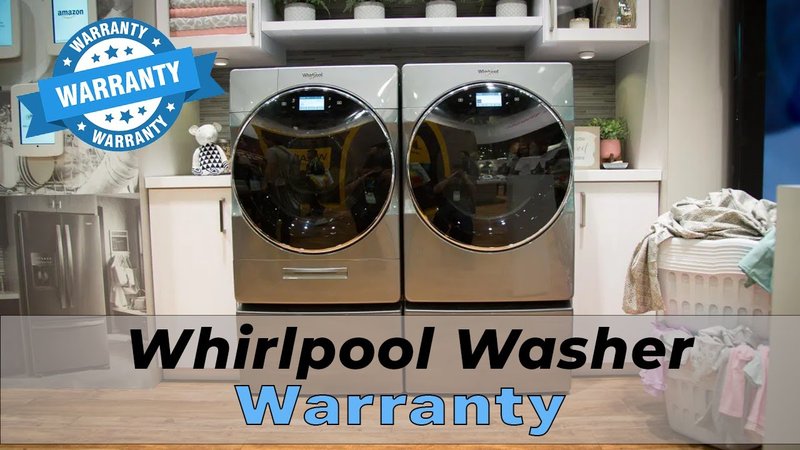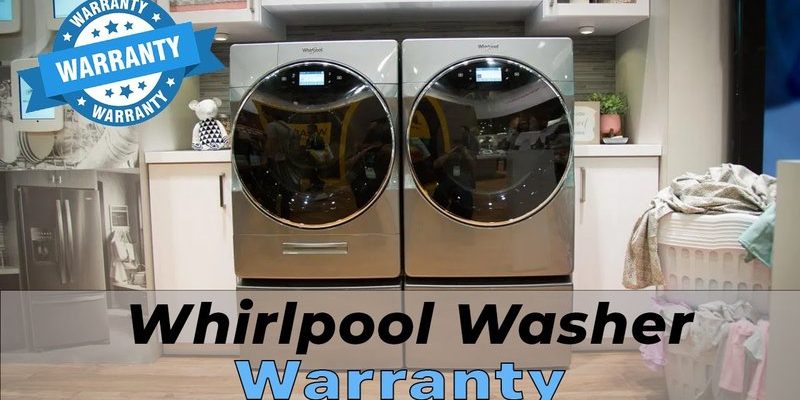
Honestly, understanding a warranty can feel like decoding a secret language. It’s a bit like buying a ticket for a ride—you want to know what’s included before you hop on. Whirlpool, a well-known brand for laundry appliances, offers warranties that cover a range of issues, but the details matter. Let me explain how this warranty works and what you’re actually protected against when you own a Whirlpool washer or dryer.
What Is the Whirlpool Laundry Appliances Warranty?
At its core, the Whirlpool laundry appliances warranty is a promise from the manufacturer that your new washer or dryer will work as expected for a certain period. If it doesn’t, Whirlpool will take responsibility for repairs or parts replacement at no extra cost to you. Think of it like a handshake deal that ensures you’re not stuck paying out of pocket if your appliance breaks early.
Typically, Whirlpool offers a limited warranty that lasts about one year from the purchase date. This means any manufacturing defects—like faulty wiring or broken components—are covered. The warranty usually includes both parts and labor, so you won’t be hit with surprise service fees either.
Here’s the thing: the warranty *doesn’t* cover everything. Normal wear and tear, accidental damage, or problems caused by improper use are usually not included. So if your washing machine stops working because you overloaded it or forgot to clean the lint filter in your dryer, the repair might not be covered. It’s like buying insurance—you’re protected against manufacturer mistakes but not everyday mishaps.
What Parts and Issues Are Typically Covered?
You might be wondering, “Does the warranty cover the motor if it burns out? What about the control panel?” Good questions. Most Whirlpool laundry warranties cover key components that are most likely to fail due to manufacturing defects. That includes parts like:
- Motors and pumps: The heart of your washer, responsible for spinning and draining water.
- Control boards and electronics: The “brain” that runs the washing cycles and dryer settings.
- Drums and tubs: The part where your clothes go—usually covered unless damaged by misuse.
- Heating elements in dryers: Crucial for drying clothes efficiently.
- Valves and sensors: These regulate water flow and cycle timing.
If one of these parts fails during the warranty period, Whirlpool typically repairs or replaces it without charging you. For example, imagine your dryer’s heating element suddenly stops working. Under warranty, Whirlpool will send a technician who replaces the faulty part, so you don’t have to figure out troubleshooting or buying a part yourself.
What won’t be covered? Parts like filters, knobs, or belts that wear out over time usually fall outside warranty coverage. These are considered normal wear items, and you’ll likely need to maintain or replace them yourself.
How Does Labor Coverage Work in the Whirlpool Warranty?
Here’s something many people don’t realize: the warranty doesn’t just cover parts—it often includes labor, too. That means if a repair is needed, Whirlpool will pay for a qualified technician to come to your home and fix the appliance. You won’t have to hunt for a repair person or pay extra for their time.
That said, labor coverage usually applies only during the main warranty period, which is often the first year after purchase. After that, if something breaks, you might have to cover labor costs unless you purchased an extended warranty or service plan.
Also, labor coverage hinges on the problem being a manufacturer defect, not accidental damage. So if your washer leaks after a pipe burst in your house, that’s generally not Whirlpool’s responsibility. But if the motor fails due to a manufacturing fault, the labor to fix it is included.
Are There Any Limitations or Exclusions in the Warranty?
Like all warranties, Whirlpool’s laundry appliance warranty comes with some fine print—limits on what’s covered and what’s excluded. It’s important to understand these so you don’t get caught off-guard.
Common exclusions include:
- Damage from misuse or accidents: Dropping the appliance, improper installation, or using non-approved detergents won’t be covered.
- Wear and tear: Parts that naturally degrade over time, like belts, knobs, or filters, often don’t qualify.
- Commercial use: If you use a residential appliance in a business environment, the warranty might be void.
- Unauthorized repairs: Fixing the machine yourself or hiring unapproved service providers can cancel warranty coverage.
Whirlpool’s warranty also usually requires that you register your appliance and keep your proof of purchase handy. Without that, the claim process becomes trickier.
How to Use Your Whirlpool Laundry Warranty: Step-by-Step
If your washer or dryer acts up and you think it’s covered, here’s a simple way to approach warranty service:
- Check your warranty documentation: Find your purchase receipt and any warranty papers. Confirm the warranty period and coverage details.
- Identify the problem: Is the appliance truly malfunctioning, or could it be a simple fix like resetting the control board or cleaning filters? Sometimes, a quick troubleshooting step can save you a call.
- Contact Whirlpool support: Use the official website or customer service number. They’ll verify your warranty status and help you schedule a repair if needed.
- Schedule technician visit: Whirlpool will arrange for a certified technician to come and diagnose or fix the issue, usually under the warranty terms.
- Keep records of the service: Save any repair orders or communication for future reference.
Here’s the thing: sometimes appliances need a reset or re-sync of their electronic control panel to work properly again. In those cases, Whirlpool’s support might guide you through a simple procedure first before sending out a technician. This can be a quick way to get your machine running again without waiting for an appointment.
Is an Extended Warranty Worth It for Whirlpool Laundry Appliances?
You’ve probably heard about extended warranties or service plans that go beyond the standard coverage. So, is it worth buying one for your Whirlpool washer or dryer?
Honestly, it depends on your situation. The standard warranty covers most manufacturing defects for about a year, but major repairs outside that timeframe can get pricey. An extended warranty can protect you for 2–5 years, sometimes with added perks like priority service or coverage for wear items.
But here’s the catch: extended warranties are an extra cost upfront. If you’re careful with your appliance and don’t mind occasional small repairs, you might save money skipping it. On the other hand, if you’re someone who hates surprises and wants peace of mind, paying a little more upfront could be worth it.
Consider your laundry habits, how long you plan to keep the appliance, and your comfort with troubleshooting or paying for repairs out of pocket before deciding.
What Happens If Your Whirlpool Appliance Is Out of Warranty?
Once the warranty clock runs out, you’re on your own—or are you? If your Whirlpool washer or dryer breaks after the warranty ends, you’ll likely need to cover parts and labor costs yourself. Here’s where troubleshooting skills come in handy.
Sometimes, simple fixes like resetting the appliance code or replacing a common part can bring your machine back to life without a huge bill. For example, you might need to pair a new control board or reset the motor to get things spinning again.
If the repair seems too complex, calling a reputable appliance technician who knows Whirlpool products is a smart move. They can often diagnose the problem quickly and recommend whether it’s worth fixing or if replacement makes more sense.
In some cases, Whirlpool offers paid repair services or parts sales to customers beyond the warranty period. It’s always worth checking their website or contacting support for available options.
Remember, a warranty is like a promise—but after it’s over, your appliance becomes like an old friend that might need some TLC or understanding.
Why Understanding Your Whirlpool Laundry Warranty Matters
At the end of the day, knowing what your Whirlpool laundry appliances warranty covers isn’t just about protecting your investment; it’s about reducing stress. When your washer or dryer misbehaves, you don’t want to be scrambling to understand what’s covered or wasting time on repairs that could have been prevented.
Think of the warranty as a user manual’s safety net—a way to get help or repairs when your machine doesn’t behave as it should. But that net has limits, and understanding those limits helps you use your appliance wisely and plan for future repairs.
So next time your laundry day hits a snag, you’ll know exactly what the Whirlpool warranty covers, how to get help, and when to roll up your sleeves yourself. Because honestly, laundry is hard enough without appliance drama.
—
Owning a Whirlpool washer or dryer means you have some solid protection against manufacturing defects thanks to their warranty. This coverage typically includes major parts and labor for about a year, but it’s important to know what’s excluded, how to start a claim, and whether extended warranties are right for you. With this knowledge, you can confidently tackle laundry appliance troubles—whether that means calling in a pro or troubleshooting a quick reset yourself. That way, your laundry routine stays smooth and stress-free, just the way it should be.
